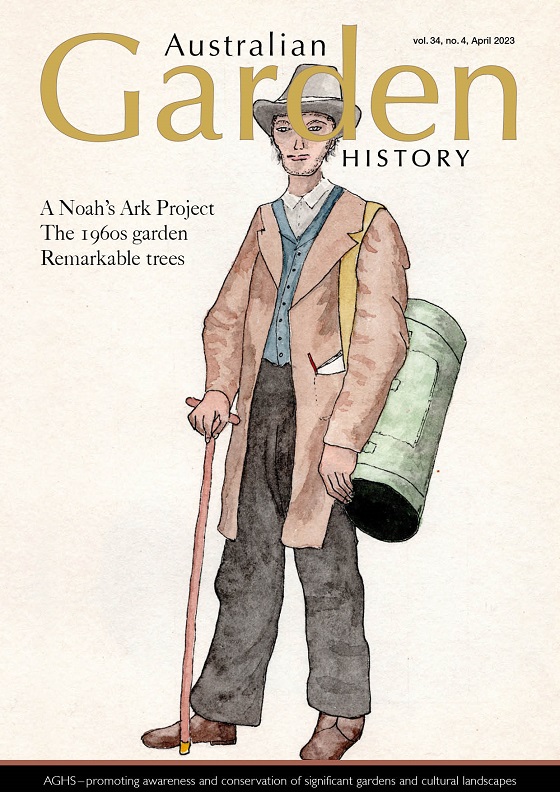Contents
Saving ancient plants from extinction: Inala Jurassic Garden’s Noah’s Ark project Tonia Cochran
The Inala Jurassic Garden is a small, privately-owned botanic garden located at Inala, on Bruny Island, off Tasmania’s south-eastern coast. It is a repository for more than 700 species of plants with Gondwanan connections, planted in family groups for easy comparison of species from the southern continents. The garden was originally designed to demonstrate the Gondwanan connections of these plants but, increasingly, the focus is to grow ex-situ insurance specimens of species at most risk of extinction. Many are already listed as threatened in the wild; their future looks bleak.
First Knowledges: Connecting with Country Craig Burton and Stuart Read
The First Knowledges series of publications offers insight into Indigenous knowledges past, present and future, underscored by the timelessness of the Dreaming.
Peter Good: Gardener on board Matthew Flinders’ Investigator Dot Evans
Peter Good was attached to the team of Scientific Gentlemen aboard HMS Investigator and a vital link in getting dried plants and seeds back to England from Australia: no easy task.
The 1960s garden in Australia: A decade of change Judy Hornton
In Australian gardens of the early years of the 1960s flowers reigned supreme. As the decade progress, the bush garden was embraced as were new approaches to gardening.
Schinus molle var. areira: Peppertree, Peruvian peppertree, peppercorn tree John Dwyer
The peppertree or peppercorn tree has been a popular introduction to most of Australia and is now naturalised in all mainland states except the Northern Territory. This fast-growing evergreen tree has a semi-weeping habit, with drooping pinnate leaves and branches. Peppertrees may be invasive in some contexts but there is much more than that to their story.
A lonely tree in an urban jungle: How planning rules protected a Gleditsia sinensis Max Nankervis
Should you find yourself passing the southwest corner of Bourke and King streets in the centre of Melbourne, you may be surprised to see a sole tree in the forecourt of the 20-storey office block known as 607 Bourke Street. You might wonder how this tree, a Gleditsia sinensis, came to be growing in such an inhospitable environment. Well, this is a tree with history. Against all odds, it has survived in this location for more than 160 years, along the way braving a site demolition and redevelopment.
For the bookshelf: Elizabeth & John – The Macarthurs of Elizabeth Farm by Alan Atkinson Reviewer Angela Low
While Elizabeth and John Macarthurs story is familiar, Atkinson draws out the individual characters of this extraordinary couple.
Landscapes evolution: Ipswich and environs Jane Lennon
Ipswich is located near the junction of the Bremer and Brisbane rivers in a wide fertile valley between the forested mountains of the D’Aguilar Range to the north and rounded hills to the south and west. This landscape has been moulded by the river, by its railway network, by mineral extraction. Now it is in a post-industrial phase with service industries and increasing residential development. Ipswich is proud of its heritage.
Vale Peter Valder
AGHS national oral history collection: Jean Walker
Edith Jean ‘Jinny’ Walker, with her sister Betty Maloney, wrote Designing Australian bush gardens and a sequel, and with Joan Bradley, Bringing back the bush: the Bradley method of bush regeneration. In 2007 she spoke with Roslyn Burge and Stuart Read about influences on her gardening style.


